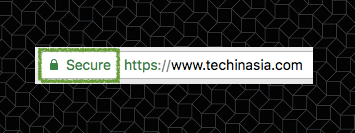
Your domain is your brand. Image credit: Pexels.
Imagine this: You have it. The perfect name for your brand, after hours of brainstorming and selection. You plan out your brand identity, design a logo, fuss over color scheme. Finally, you decide to release your product to the world and launch your website.
Oops. The domain was taken. Back to the drawing board.
If this is you, or you would like to avoid this scenario, read on.
Name it right
The name is an often overlooked aspect of domain registration. However, it is key to creating brand legitimacy amongst customers and investors. It’s well-documented, for example, that the owners of financial planning app Mint attribute their success over their competitor Wesabe to their name, and spent months trying to acquire the domain name because they believed this enhanced customers’ trust in their brand. They were right. Successful Japanese tech company GMO Internet Group paid JPY800 million (US$6.7 million) for its international brand, Z.com.
What’s more, as the web has grown exponentially, it has become increasingly harder to find a good domain name that is still available. Over 12 million domain names were registered in just one quarter in 2016, says Yuichi Izumi, Project Manager of Z.com in the Philippines. In some cases, brands have had to change their name due to limited availability.
“One big misconception is that with the rise of social media, domain names are not as important as they used to be. However, with more and more startups being born by the day, a good domain name can be what separates a ‘legitimate’ brand compared to other fly-by-night operations,” says Yuichi.
It’s also important for startups to do their due diligence on the domain name itself. Before you make the payment, check if your chosen domain name or a derivative has been used before. Ensure there are no negative connotations to the name – or that it potentially violates any trademarks. For example, Mike Rowe, who bought MikeRoweSoft.com, had to settle a lawsuit with Microsoft for an Xbox and software training.

Mike Rowe, the then 17-year-old high school student who found himself caught in a lawsuit. Photo credit: AP.
Secure the site
It is important that you, as the owner of the company, have access to domain management. This ensures that you get expiration notices and other important messages like abuse alerts. That said, one of the least-known facts in domain registration is that anyone can retrieve a registrant’s personal information, as it is on a publicly-accessible database. That includes the name, address, contact number, and email address. Anyone who knows the registered domain name can retrieve all your information. Ensure you have the requisite privacy protection for your public information.
Another potential threat is phishing sites. This is most common for brands that accept payments. Scammers can make imposter sites with a web design and domain name that is deceivingly
close to the original, in the hopes of capturing customers’ sensitive information. Imagine going to gmail.co rather than gmail.com and entering important and sensitive security details.
To avoid your customers doing this and your brand taking a hit, educate your customers to identify a phishing website. It helps to keep the domain name and the website as memorable and as simple as possible to avoid mistakes like typing errors. To avoid phishing injections, it’s important for site owners to know the website and its structure, and the files in the site’s directory to tell what belongs there and what is an attempt to insert malicious elements. You can also invest in SSL certificates or even extended verification certificates. On logins or payment screens, such certificates can create visual cues like padlocks.

An example of a padlock indicating a secure connection next to the domain. In this case, information is kept private when sent to the site. Background image from Jonathan Mak.
Get good value
Some domain registrars advertise cheap domains but charge high prices for additional services. Such services can include ad removal, editing the Domain Name System (DNS), WHOIS editing fees, and domain renewal fees. Some may even set the domain to auto-renew without telling you. A cursory search shows many such complaints.
Domain privacy protection is crucial, but many domain registrars would charge for this service. Z.com provides it for free.
Ultimately, it would be penny-wise, pound-foolish to just go with the cheapest domain registrar. Do more in-depth research on what your company’s needs are, and select a domain registrar service that is committed to transparent pricing and provides full service offerings.
Get smarter
Startups have been getting creative. Instead of the traditional brandname.com, companies are trying out .ly, “get”+productname.com, or removing vowels. Other domain extensions such as .shop or .blog are available too. These are some of the fastest-growing top-level domains (TLD) today.
Having said that, when you have raised more funding, get the .com domain. And if you can, grab similar domains as well when you have more funding to increase legitimacy and prevent cybersquatters.
For example, Flickr.com eventually bought Flicker.com, redirecting up to 3.6 million unique visitors a year. But too bad for Tumblr.com – Tumbler.com redirects to drinkware brand Tervis’ homepage.
Become your brand
To add that visual oomph and to make their website more memorable, startups should consider investing in a logo and visuals that include the brand name.
“Your domain name is your brand on the web. It reflects your identity, so you have to strike the balance between unique and obscure. It could also be an important consideration when raising funds,” says Yuichi.
The tricky part of this exercise is to strike the balance between being unique and obscure. People type in domains as they hear them. Make sure your domain name is phonetically predictable. If you use creative domain hacks – like www.aweso.me – make sure it translates verbally.
Z.com provides simple and affordable solutions to your domain and hosting needs. It is the global brand of Japan’s largest internet group and Asia’s 1st domain registrar, GMO Internet. Z.com has a growing footprint in Asia, with offices in Singapore, Thailand, Myanmar, Vietnam, and the Philippines.
For more information, please visit Z.com.
This post Getting your website domain right is harder than you think. appeared first on Tech in Asia.
from Tech in Asia https://www.techinasia.com/get-domain-right
via IFTTT
No comments:
Post a Comment